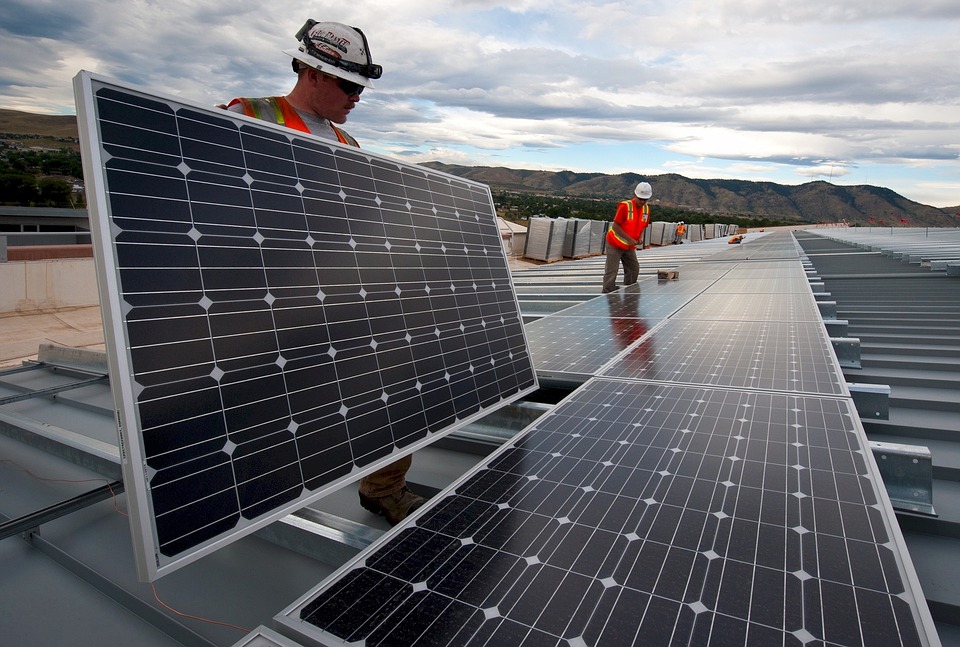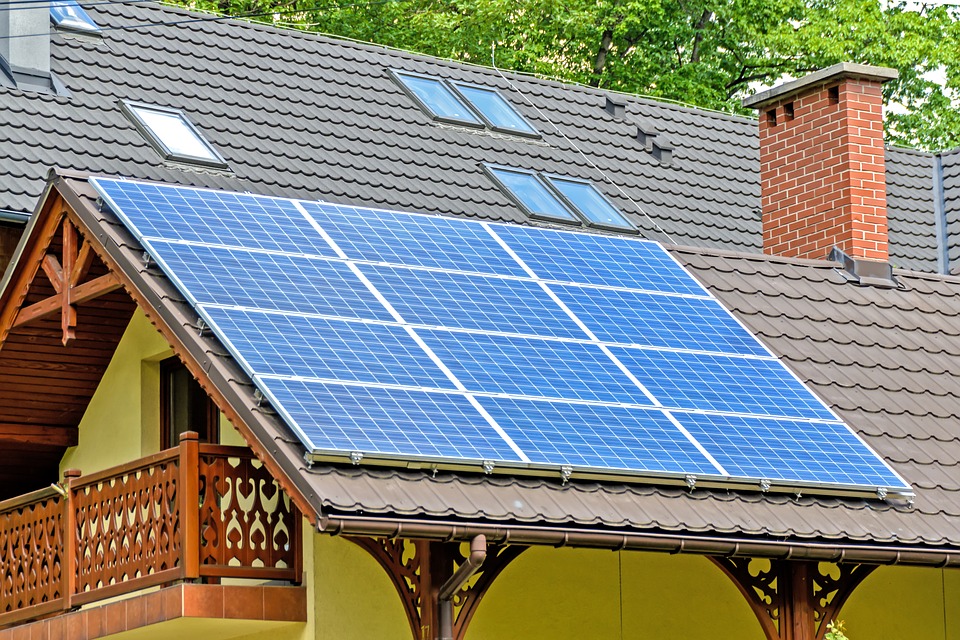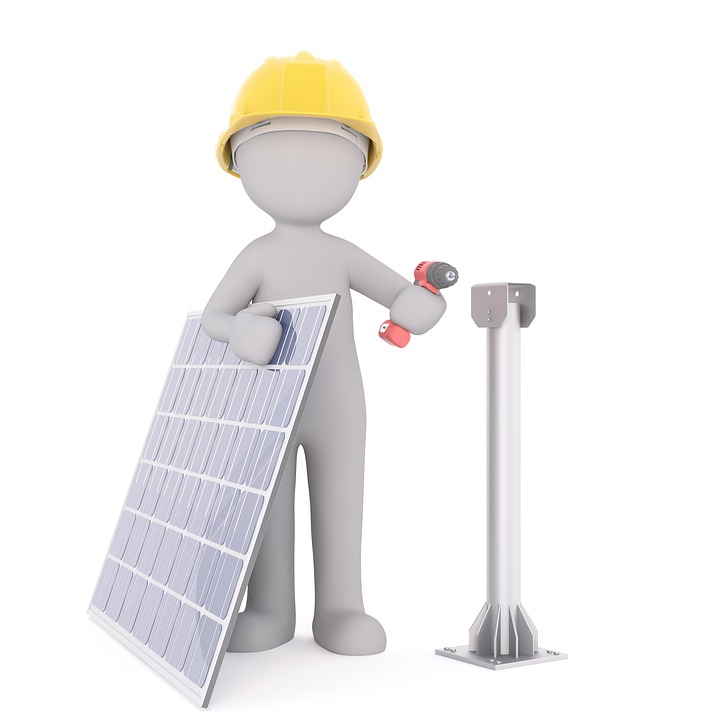Joint life insurance policy for couple...how beneficial?


Consumers are shocked at the rising electricity bills, year by year. Especially the middle and lower classes find it burdensome. Electricity is a daily necessity. Many institutions will shut down if there is no electricity. There was a time when majority households were depending only on lights and fans. But now people have freezers, ACs, washing machines, wet grinders, geysers or heaters, and many such gadgets. As such, monthly electricity bill is increasing. We pay in thousands of rupees. The best solution for this problem is to set up a small solar plant on the roof top.
Earlier, solar products were very expensive. Production of electricity too was an expensive affair. The Sun's rays are fuel to solar power. They do not deplete with usage. Moreover, we need not pay any bills for using sunlight. However, the equipment used to absorb sunlight and turn it into electricity, had been very expensive. Hence, solar power was not so popular. But the Centre is giving subsidy and encouraging use of wind and solar power. As such, cost of solar panels and equipment producing solar power has come down. In the past six years, the cost of solar panels has come down by 85 per cent. The government has opened up a new policy of subsidising private solar plants on roof tops, in order to meet more demands for electricity. We can use as much solar power as we want and sell the remaining to power grids. Let us see the details:
Less investment A kilowatt (kw) capacity Roof Top and Grid Plant would cost Rs. 60,000. After deducting 30 per cent Central subsidy, the plant cost will come up to Rs. 42,000. One kw is equal to 1,000 units. The life span of a solar power-producing plant is 25 years. A 120-sq. ft. area on the roof top is sufficient to set up a kw capacity solar plant. This plant will be useful for lighting two bulbs and two fans. During day time, we do not need lights and fans. The power can be used for other gadgets. However, solar power is not sufficient for high capacity gadgets like ACs and heaters. TV, lights and fans can be run with solar power. Those who can afford to spend Rs. 3 lakh, can set up a five kw capacity solar plant. The capacity of the solar plant can be set up depending on your need.
A kilowatt (kw) capacity Roof Top and Grid Plant would cost Rs. 60,000. After deducting 30 per cent Central subsidy, the plant cost will come up to Rs. 42,000. One kw is equal to 1,000 units. The life span of a solar power-producing plant is 25 years. A 120-sq. ft. area on the roof top is sufficient to set up a kw capacity solar plant. This plant will be useful for lighting two bulbs and two fans. During day time, we do not need lights and fans. The power can be used for other gadgets. However, solar power is not sufficient for high capacity gadgets like ACs and heaters. TV, lights and fans can be run with solar power. Those who can afford to spend Rs. 3 lakh, can set up a five kw capacity solar plant. The capacity of the solar plant can be set up depending on your need.
Grid-connected solar plant By setting up grid-connected roof-top solar plant, the excess of power can be transferred to the grid. Power authorities will distribute this to others. Power can be saved through this. Power distribution agencies set up a meter for this purpose. The power produced by solar plant will not be sufficient during peak hours. At such times, power can be supplied from the grid. By using solar power when the supply is high and taking power from the grid when the supply is low, power bills can be reduced to a large extent. For example, let us say, you use 1,000 units in one month. Supposing you have supplied 40 units to the grid via your roof-top solar plant. Then only 60 units will be charged. In case you supply more power to the grid than what you use, the power distribution agencies will pay you a minimum sum per unit. Tiny commercial establishments and small scale industries can utilise solar power plants for their needs. They can also avail Income Tax (IT) exemptions.
By setting up grid-connected roof-top solar plant, the excess of power can be transferred to the grid. Power authorities will distribute this to others. Power can be saved through this. Power distribution agencies set up a meter for this purpose. The power produced by solar plant will not be sufficient during peak hours. At such times, power can be supplied from the grid. By using solar power when the supply is high and taking power from the grid when the supply is low, power bills can be reduced to a large extent. For example, let us say, you use 1,000 units in one month. Supposing you have supplied 40 units to the grid via your roof-top solar plant. Then only 60 units will be charged. In case you supply more power to the grid than what you use, the power distribution agencies will pay you a minimum sum per unit. Tiny commercial establishments and small scale industries can utilise solar power plants for their needs. They can also avail Income Tax (IT) exemptions.
Three types
One type of solar plant is that which is aligned with the main grid. This is called 'on grid.' Meaning, whatever excess solar power that is produced will be sent to the grid. Second is off grid. In this type, the excess power is stored in batteries. The third type of plant is one in which, after excess power is stored in batteries, further excess power will need to be sent to the grid. For this, a hybird system needs to be installed.
Solar PV Cell? Solar PV Cell is a special semi conductor diode. This absorbs sunlight and changes to Direct Current (DC) with photo voltaic effect. Solar power supply is not the same at all times. It keeps changing as per the wavelength of the Sun's rays. Solar PV Cell produces solar power, even when the weather is cloudy. But the supply will be less.The capacity of Solar PV Cell is less. If another Cell is added to it, the supply is increased. Solar Cell is rated as per the amount of solar energy it produces. Solar Cells 4,8,12, and 16 are available in the market. For 1,000 kw power, a 12 capacity Solar Cell will have to be installed, in 100 sq.ft. area on the roof top.
Solar PV Cell is a special semi conductor diode. This absorbs sunlight and changes to Direct Current (DC) with photo voltaic effect. Solar power supply is not the same at all times. It keeps changing as per the wavelength of the Sun's rays. Solar PV Cell produces solar power, even when the weather is cloudy. But the supply will be less.The capacity of Solar PV Cell is less. If another Cell is added to it, the supply is increased. Solar Cell is rated as per the amount of solar energy it produces. Solar Cells 4,8,12, and 16 are available in the market. For 1,000 kw power, a 12 capacity Solar Cell will have to be installed, in 100 sq.ft. area on the roof top.
Solar plants do not supply energy throughout the day, all through the year. It depends on the availability of sunlight and the capacity of the panels. This is referred to as efficient usage. Only 19 per cent of the total capacity of energy that can be produced is taken in to consideration. One kw capacity solar system, will produce 1,600 kw electricity in a year.
Care has to be taken to see that maximum sunlight falls on the Solar PV panels. There should be no trees or buildings in the way of the sunlight and the panels. The company that supplies the equipment of roof-top solar power plant will itself install the plant. So it is not necessary to worry about this. But the weight of the panels set in one sq mt. will be 15 kgs. So the roof has to be strong enough to bear the weight of the panels.
Equipment Batteries, inverter, solar PV cells come along with Roof-top Solar Plant modules. Deep cycle batteries (lead acid) is congenial for solar PV system. These batteries last from five to 10 years. They can store 80 per cent electricity. Batteries are designed to store electricity for long. Automotive batteries do not help. Sealed, tubular positive plate batteries that have never been used, are functional on PV solar systems. Inverters can be arranged as per the power production. Fusion wave or modified sign wave inverters are useful to PV solar systems. Solar plants that are aligned to grids do not need inverters or batteries. But if one wants to store the energy produced, inverters and batteries are essential. The cost of setting up the plant increases.
Batteries, inverter, solar PV cells come along with Roof-top Solar Plant modules. Deep cycle batteries (lead acid) is congenial for solar PV system. These batteries last from five to 10 years. They can store 80 per cent electricity. Batteries are designed to store electricity for long. Automotive batteries do not help. Sealed, tubular positive plate batteries that have never been used, are functional on PV solar systems. Inverters can be arranged as per the power production. Fusion wave or modified sign wave inverters are useful to PV solar systems. Solar plants that are aligned to grids do not need inverters or batteries. But if one wants to store the energy produced, inverters and batteries are essential. The cost of setting up the plant increases.
Warranty
Solar PV module comes with 25 years warranty. Solar Homelight System (with Inverter) comes with five year warranty. Batteries that do not require sealed maintenance have two year warranty, while Lead Acid plated module has five-year warranty.
Usefulness
There is less burden of paying heavy electricity bills. It does not harm the environment in anyway. Investment on setting up the plant is less. No sound is emanated by the plant. Maintenance cost is low. Time to install too is very less.
Cost of setting up plant
The cost of setting up a solar energy plant depends on the company that supplies it. The costs also depends on many factors like brand, certifications, standards, quality, warranties, batteries and inverters. For more information you can visit, Tata solar power site or http://www.eai.in/ref/ae/sol/rooftop/cost online.



















